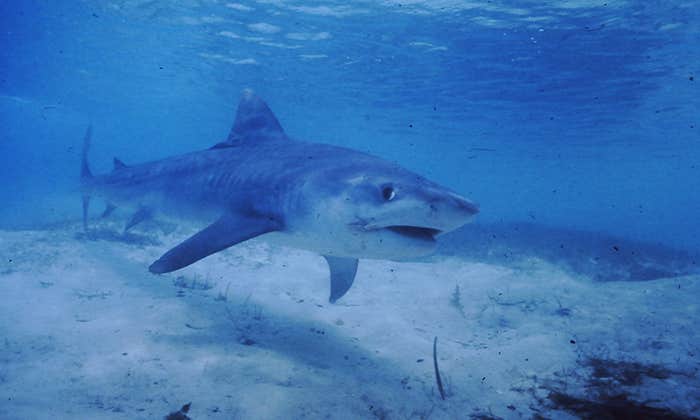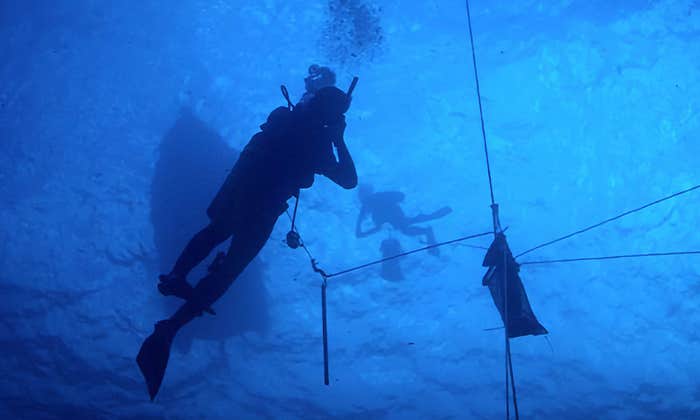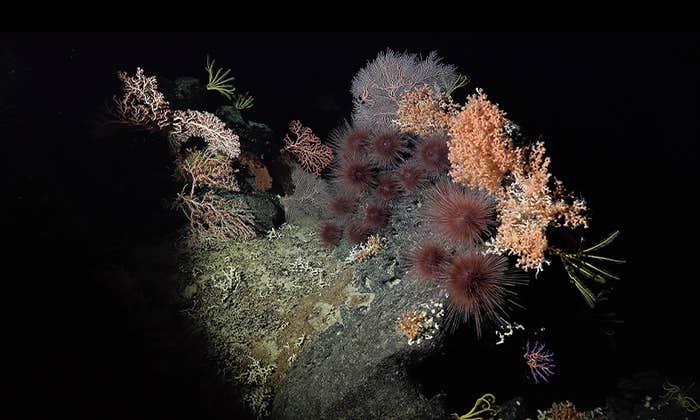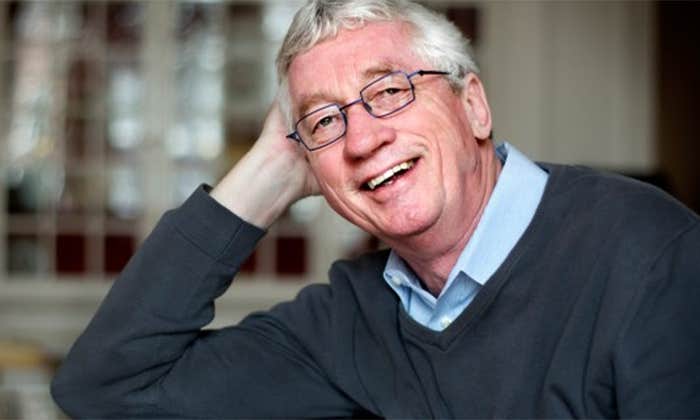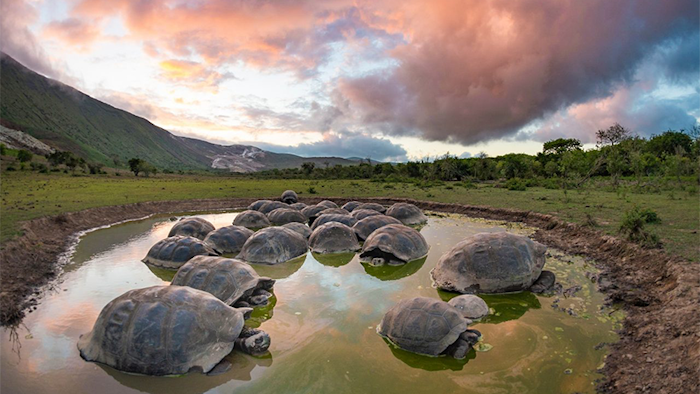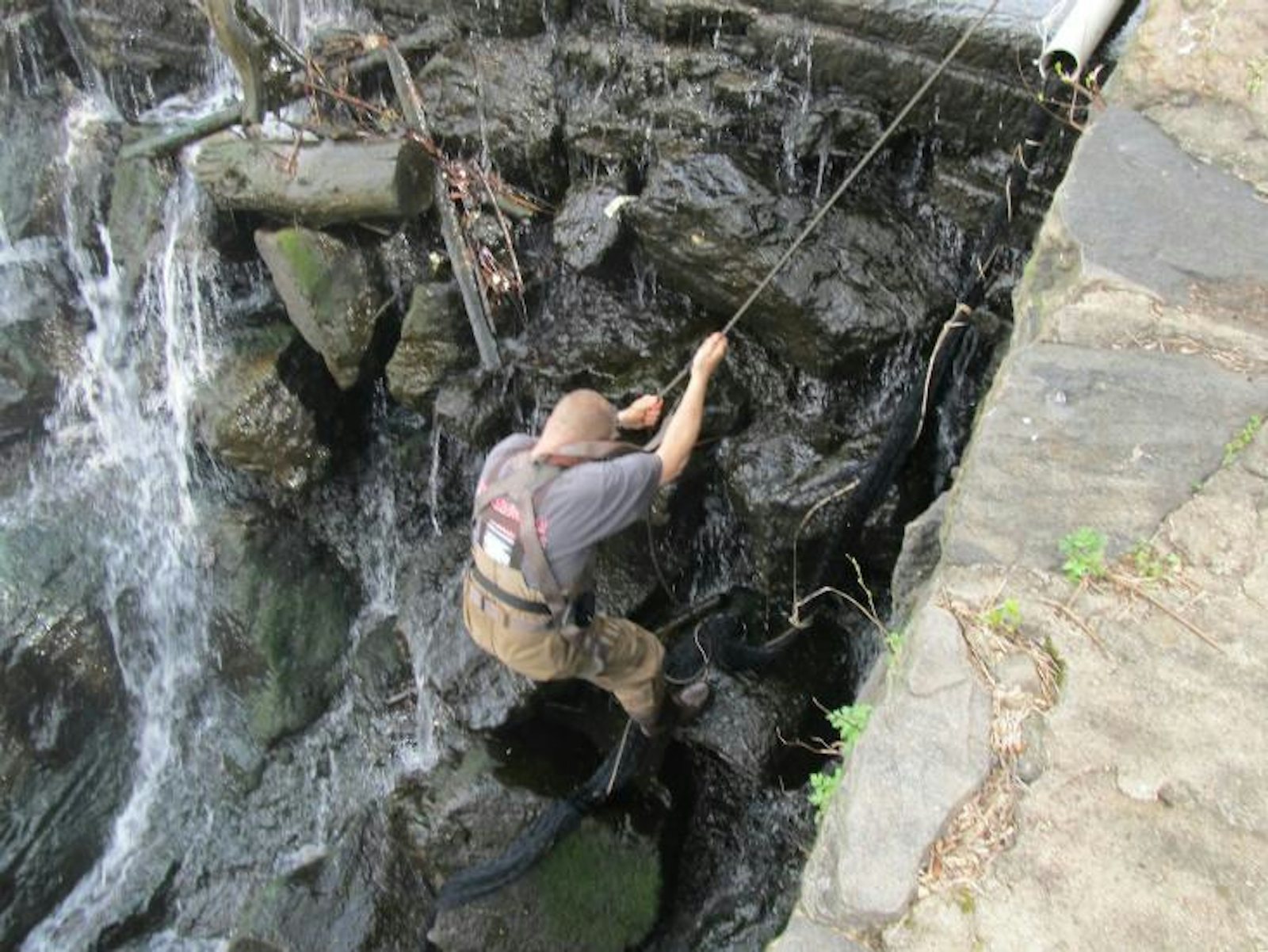
In the annals of natural history, there is perhaps no fish so singularly unusual, even mysterious, as Anguilla, the eels. Unlike every other migratory fish on Earth, they spawn in the open ocean and mature inland, in lakes and streams—an elementary fact, yet it took centuries for scientists to discover. They didn’t realize that larval eels, which resemble translucent cherry leaves, were actually eels.
Even with this knowledge, nobody has ever actually seen eels mate. Instead they’ve inferred its occurrence from the oceanic distribution of larvae. The youngest American eels (Anguilla rostrata) are found in the Sargasso Sea, part of the northern Atlantic Ocean near Bermuda. From there they drift on the Gulf stream up the eastern coast of North America, eating plankton and becoming more eel-like, though still translucent. At some point they encounter, hundreds of miles from shore, a part-per-trillion chemical trace of fresh water and instinctively follow it back to the source.
“They get their cue and de-train,” says George Jackman, who one sunny morning in early April is standing in a small park in the southeast corner of Bronx Park, just north of 180th Street, sewing a length of net into a makeshift eel ladder. Jackman, a former New York City police lieutenant turned doctoral biology student, estimates the distance to the Sargasso Sea at 1,603 miles: 1,600 to the Bronx River’s mouth and another three up the river to 180th Street, where the eels’ irresistible migratory imperative meets a 14-foot-tall dam.
Jackman, whose clipped, crime-drama speech assumes a tender note while discussing “probably the most fascinating creatures I’ve ever studied,” wants to help the eels climb that dam. To make the ladder, he’s rolled the net into a long ribbon, its form held by rough stitches. Jackman does the sewing; his assistant and two volunteers from the Bronx River Alliance, a local environmental group, hold the net so he can work. They snicker at his incongruous domesticity. Compact and muscular, with close-cropped blonde hair, wraparound shades, and block-like forearms, Jackman looks like he might be off-duty rather than retired. For thread he uses a rope. For a needle he raided his wife’s kitchenware. “I pulled the tip off a spatula from Williams-Sonoma,” he says. “It’s so useful.”
The team carries the net past baby-strolling moms and morning park-sitters and out onto the dam. Upstream the river recedes into forest. Downstream it passes into the red brick jungle of the Bronx, population 1.4 million. At the top of the dam, Damian Griffin, the education director of the Bronx River Alliance, picks up a branch. “Signs of the beaver,” he says, pointing to the telltale gnawed tip. José, as the borough’s sole, beloved Castor canadensis is known, was spotted in 2007, after his species’ 200-year absence from the watershed.
Jackman does the sewing; his assistant and two volunteers snicker at his incongruous domesticity.
José soon became a symbol of nature’s restoration and resilience within the river, which over the centuries had experienced a full range of urbanization’s ecological insults. Its tributary brooks were diverted into sewers. Its banks, except for parkland surrounding the Bronx Zoo and New York Botanical Gardens, were denuded. Well into the 20th century it was a receptacle for industrial waste, and for raw sewage well into the this century. Technical documents refer to the “Bronx River Sewershed.” Yet there is the beaver stick, and a blue heron flying low over the water, and a red-tailed hawk overhead, chased by a blackbird.
The story isn’t so happy for migratory fish, though. Whereas a few eels might actually wriggle up a muddy path beside the dam—they can breathe through their skin, and survive brief sojourns out of water—for most the dam is a wall, cutting them off from waters that might still nourish them to maturity. To make matters worse, gender is a function of population density; eels arriving at the dam are sexually indeterminate, and if they remain crowded at the bottom will almost exclusively become males, further winnowing their populations. The Bronx River situation is not unique. Dams are ubiquitous, and total American eel populations have plummeted to a few percent of historical levels.
The species hangs by a thread, but a thread is still something. Last year Jackman and biologist John Waldman, the elder statesman of New York City’s marine biology, found baby eels at the dam’s base, using an eel trap secured by rebar and washed-up plastic bottles. (Jackman also found a 10mm Glock handgun, discarded in the shallows. He brought it to the local precinct, where it was traced to a shooting weeks earlier.) Hence this year’s ladder. “We don’t know if it will work, but we’ve got to try,” says Jackman.
His team picks a spot on the dam’s far side, just below a figurine of Saint Barbara, one of the patron saints of Santeria—a syncretic form of Catholic, West African, and Caribbean faiths popular in the area—along a concertina-wired fence that borders the Bronx Zoo’s Wild Asia exhibit. No animals are visible today, but a Wild Asia monorail car and its bemused operator pass several times. The operation takes a couple hours: The netting is threaded through PVC pipe, which is positioned over the dam’s lip with rebar and two-by-fours. The net’s end rests in a pool below. The pipe channels a trickle of water into the net. Hopefully the eels will detect this and start to climb. A cheer goes up as the water goes through.
“They’d swim all the way to Lake Ontario if they could find a way,” says Jackman as he walks back across the dam. Should he succeed, these eels won’t get quite that far: There are still two more dams on the Bronx River. But at least they’ll have a few more miles of water, a better chance at growing older and fatter, at eventually swimming back over the dam and down to the Sargasso and starting the cycle of eel life anew. The job done for today, Jackman sits on a bench and removes his waders. “This is God’s work, if there is such a thing,” he says. “You sew the holes in the fabric of this world.”
Brandon Keim (@9brandon) is a freelance journalist specializing in science, environment, and culture. Based in Brooklyn and Bangor, Maine, he doesn’t eat eel sushi anymore.










